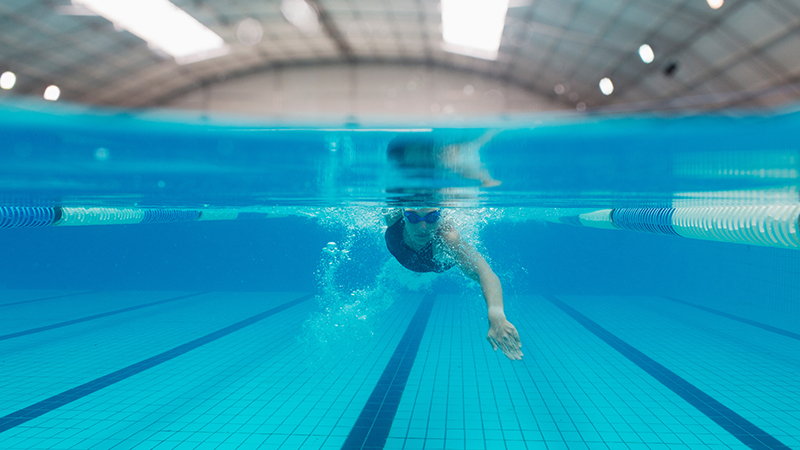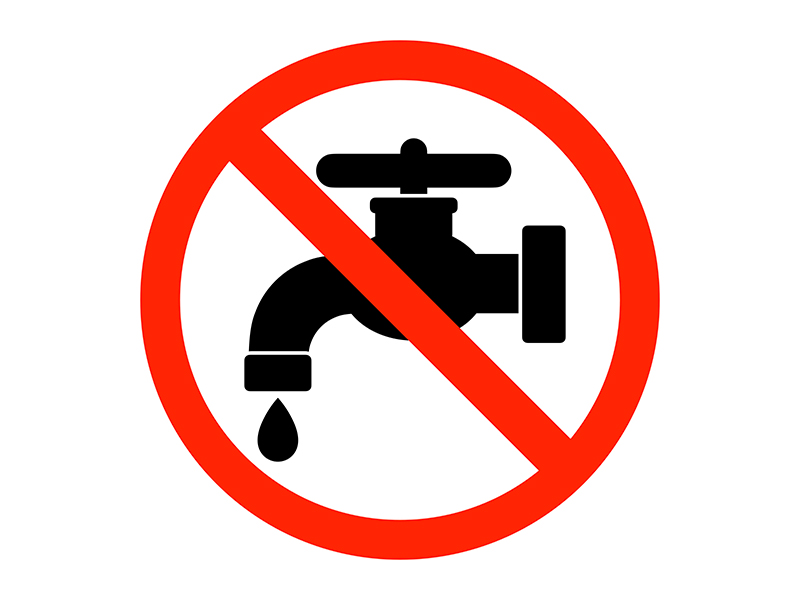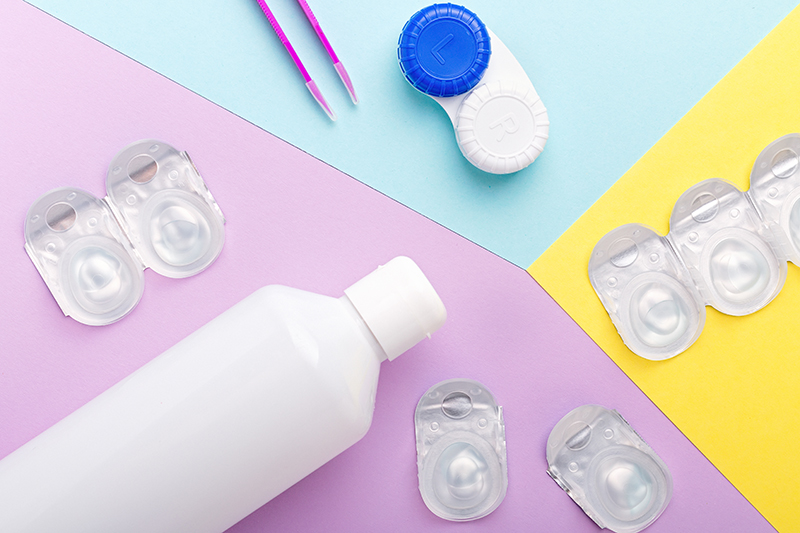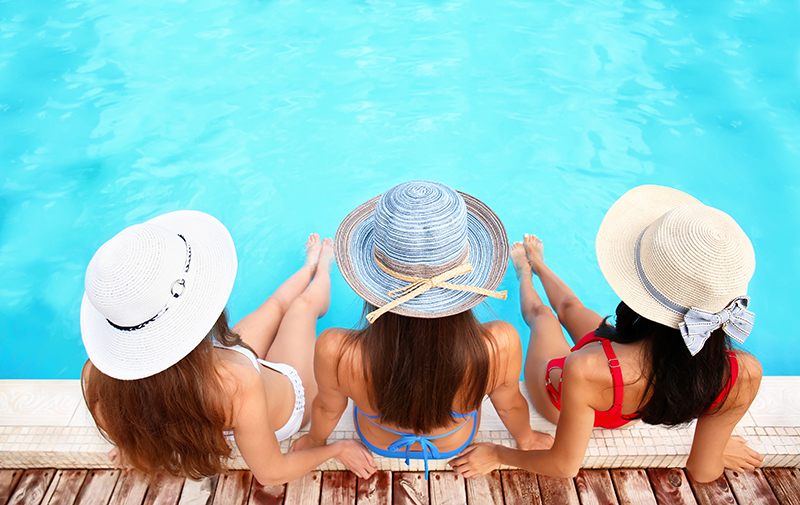Protect Your Eyes: The Hazards of Wearing Contact Lenses While Swimming

Nowadays, many people stay fit through activities such as by going to the gym, walking, jogging, cycling, swimming, playing sports and more. These activities make people feel happy, helps them maintain their health and help them take a break from work and chores.
Now that summer is nearly here, there will be even more opportunities to enjoy outdoor activities such as swimming in the ocean, engaging in marine activities, trekking, and more.
Among those who wear contact lenses, some may wonder whether it's okay to keep them on while swimming in the pool, in the sea or whilst engaging in water activities. In this article, we'd like to explain the risks of wearing contact lenses during such activities.
Wearing contact lenses in water, such as while swimming or taking a shower, is considered one of the riskiest behaviours for contact lens wearers. Other highly risky behaviours include delaying contact lens replacement and sleeping or napping with contact lenses on.
Caution! Avoid Mixing Contact Lenses and Water!

Understanding the Risks of Water Exposure with Contact Lenses
Swimming with contact lenses appears to be a straightforward hygiene matter—just take them out, right?
However, many individuals unintentionally jeopardise their eye health by not following this basic precaution. They often underestimate the potential risks of keeping their contact lenses in while swimming.
In water environments, such as in swimming pools, bacteria is present everywhere despite pool chemicals, which increases the risk of infections from contact lenses. The water can also contain harmful microorganisms that may stick to your contact lenses, increasing the risk of eye infections.
Particularly, Acanthamoeba keratitis, caused by Acanthamoeba - a type of amoeba commonly found in soil and various water sources such as ponds, rivers, soil, lakes, and even baths, poses a significant risk to us. Acanthamoeba keratitis can result in a painful corneal infection and, in the worst cases, may lead to blindness, making it a significant danger.
There are two main types of contact lenses: rigid gas permeable (RGP) lenses and soft contact lenses.
With soft contact lenses, because of the high water content, they can change shape when exposed to tap water or seawater due to the differences in osmotic pressure. This can potentially lead to discomfort and vision problems.
Furthermore, there's the possibility of contact lenses being swept away by the water current due to its light weight.
Additionally, tap water commonly contains chlorine, which can potentially irritate the eyes and lead to dryness and discomfort.
Click here to find out more about the dangers of using tap water with contact lenses.
For Maintaining Healthy Eyes:
- Remove your contact lenses before showering, bathing, swimming, or engaging in similar activities.
- Never store soft contact lenses in tap water or use tap water for cleaning them!
Proper Care and Handling of Contact Lenses with Lens Solutions

Now that you understand the risks associated with wearing soft contact lenses in water and storing them in water, what can you do to avoid these risks?
- Always adhere to proper cleaning and handling rules for your contact lenses!
To handle your contact lenses effectively, start by thoroughly washing your hands and fingers with soap and drying them using a clean towel. For more tips on handling and putting on lenses, click here to find out more. - Ensure that you consistently use contact lens solutions for cleaning your contacts, disinfecting them, and for filling your storage case. Even in emergencies, like when you need to remove a lens due to eye irritation, do not use water. Instead, remove both lenses and wait until you can safely disinfect and reinsert them.
Speaking of care products for soft contact lenses, there are several types on the market. However, one of the most commonly used ones is Multi-Purpose Solution (MPS), which allows you to clean, rinse, store, and disinfect your lenses all with a single solution.
Since individual eye conditions can vary, it's important to use the cleaning solution for soft contact lenses that has been recommended by an eye care professional.
Additionally, there may be a need for protein removal of lenses, so please follow the guidance provided by your eye care professional. - Don't forget to clean your lens case regularly.
When taking your lenses out, discard any remaining care solution in the case. Clean the case, including the lid and base, using tap water, and then make sure it is thoroughly dry before re-assembling it.
It's also advisable to replace your lens case approximately every 1 to 3 months as a general guideline to maintain cleanliness and hygiene.
Contact Lenses and Water: Other Essential Tips

Q: Can you use eye drops as a replacement for contact lens solution?
A: The answer is No.
Eye drops lack the cleaning power needed for contact lenses, which accumulates dirt and bacteria when worn. Putting unwashed lenses in your eyes is a bad idea. Additionally, eye drop ingredients can potentially harm contact lenses through chemical reactions. Even saline solutions with a similar salt concentration to tears are not recommended substitutes.
Q: What should I do in case of contact lens emergencies while I am away from home?
A: Avoid using water to wash or store soft contact lenses for your eyes health.
To prevent potential issues, always have a spare contact lens cleaning solution and a contact lens case with you when you're out and about.
It's also a good idea to carry spare Daily Lenses so you can replace your lenses easily if any problems occur.
Q: When swimming in a pool or the sea, having clear vision is essential for me. What should I do?
A : You might want to explore the option of using prescription goggles. These specially designed goggles are made to ensure clear underwater vision, making them an excellent choice for swimmers in need of vision correction. Unlike regular goggles, prescription goggles are tailored to your specific vision requirements, and can help you swim with perfect clarity.

You should now understand how soft contact lenses in water are not a good idea. While the hot summer season may tempt you to enjoy activities like swimming in pools or the sea, it's crucial for the sake of your eye health to always remove your soft contact lenses before entering the water. By taking this precaution, you can avoid potential eye problems and make sure that your summer remains enjoyable.
The team at Quicklens wishes you a safe and fun summer season!
